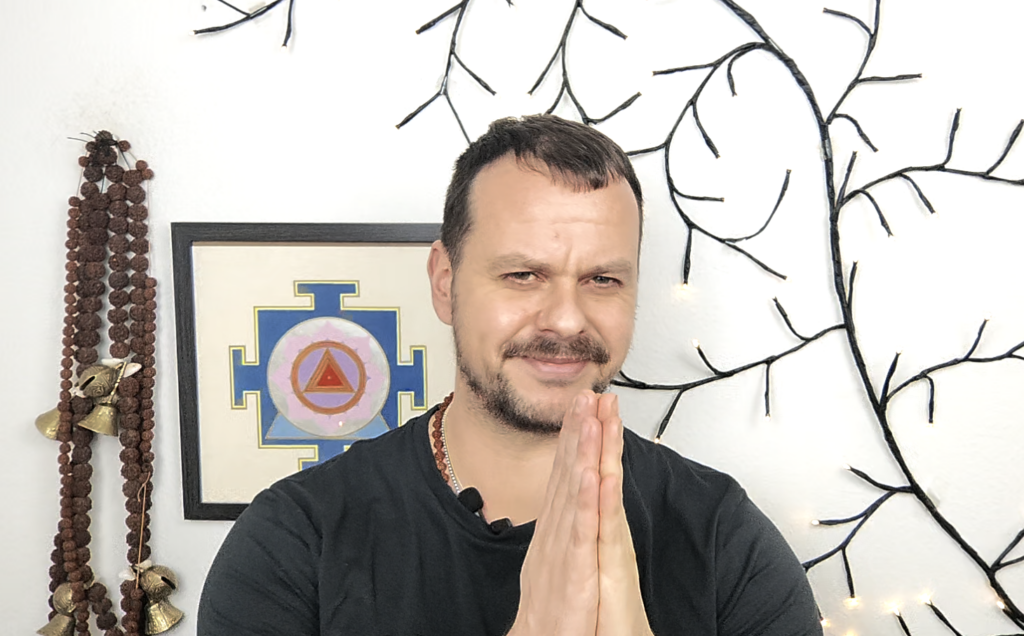What does a shaman do?
For thousands of years, shamans have been regarded as mediators between worlds. They use their knowledge as healers to serve the community and the earth. A shaman is a spiritual practitioner who functions as a bridge between everyday reality and spiritual dimensions.
Shamans work with altered states of consciousness in which they can enter other worlds beyond our physical reality. This ability to consciously travel between different levels of consciousness makes shamanic work so unique.
Difference between shaman and priest
While priests administer religious cults and are bound to institutions, shamans work independently and directly with spiritual forces in nature. Shamans are not priests and shamanism is not a religion. This connection can look different in every culture.
In my tradition of Nepalese shamanism, this connection consists of deities like Shiva or Kali. In other cultures, these may be other deities, animals, or the elements themselves.
The Daily Tasks of a Shaman
Just as diverse are the daily tasks of a shaman. In my tradition, shamans lead a normal life with work and family. Others, however, live exclusively as shamans and dedicate themselves with more time to daily rituals.
Typical daily rituals of a shaman:
- Greeting all cardinal directions and the three worlds (Upper World, Middle World, and Lower World)
- Greeting the elements (Fire, Water, Air, Earth, Ether)
- Greeting the planets Meditation or trance states to maintain connection to the spiritual world
- Energetic cleansing of the body and environment
These rituals serve to integrate all culturally significant energies. The connection is made through reverence or a friendly, loving relationship. A shaman does not work alone and the effect of his work depends on the relationship with his helper energies.
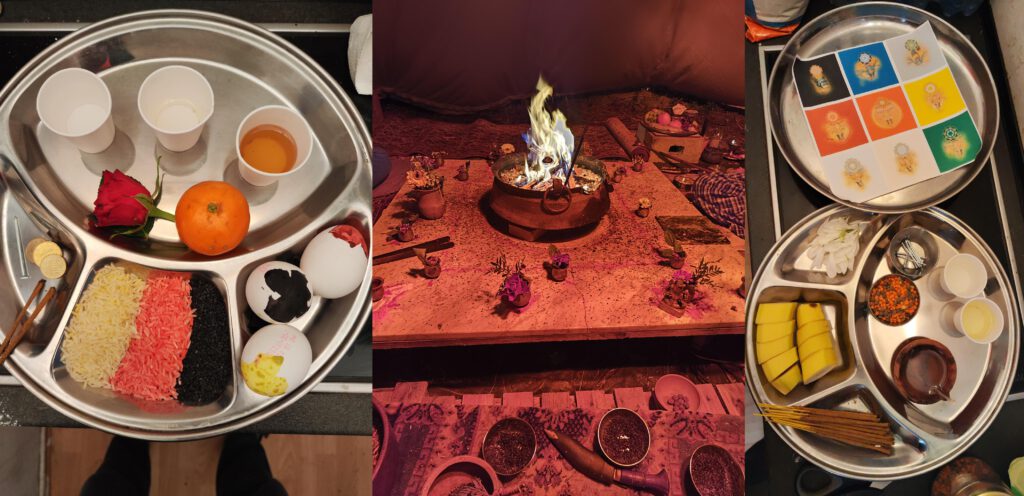
Various Rituals
Consultation and spiritual guidance in everyday life
In ancient times, a tribe consisted of various specialists to maintain balance – a leader, craftsmen, hunters, and a shaman who was responsible for the psychological and spiritual balance of the community. Since these communities have mostly dissolved, shamans nowadays work as spiritual advisors or healers. This work includes:
- Individual consultations with spiritual guidance: combination of counseling and spiritual knowledge such as astrology, energy body and karma
- Interpretation of dreams and signs: Interpretation of spiritual messages, predictions or astrological knowledge
- Shamanic healing: Healing through energetic and spiritual techniques such as mantra, sounds or physical applications.
- Rituals: Customized rituals such as fire rituals, ancestral rituals or offerings
- Making contact with ancestors, nature spirits and higher energies (channeling)
- Cleansing the energy body (aura, chakras, nadis)
Shamanic journeys and trance states
Shamans use shamanic journeys to gain practical information for their clients through spiritual insights. This intensive meditation differs through high-energy techniques with heat, movement, and sounds that put the body into a high frequency and enable a special state of consciousness. However, the decisive factor for successfully reaching spiritual energies lies in the fundamental connection, which also emanates from these energies.
For successful trance states, a mutual connection is essential – depending on whether the spiritual energies want to communicate. Even the greatest fire, the most elaborate offerings, and the most intense trance states lead to no result without the goodwill and consent of the spirits.
Trance states and levels of consciousness
Working with different levels of consciousness is a central aspect of shamanic practice. Shamans use various techniques to enter deep trance states that go far beyond ordinary meditation:
- Rhythmic trance: Through drumming, rattling or singing
- Meditative trance: Through deep breathing and relaxation techniques
- Movement trance: Through ritual dance or body movements
- Nature-related trance: In connection with trees, stones or places of power
Shamanic session in detail
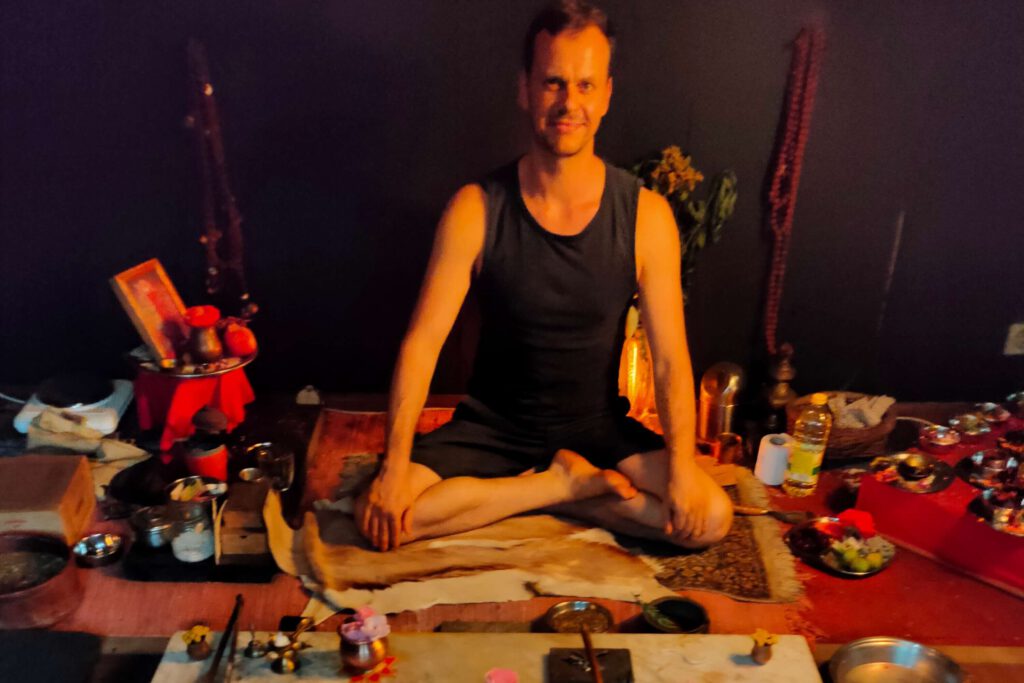
Shamanic Space
Clients seek shamanic help for a variety of reasons: financial worries, heartache, perceived curses, karmic blockages, physical complaints or energetic stress. As different and complex as these concerns may be, the basic treatment process remains the same:
Consultation and Getting-to-Know Conversation: Personal connection is essential in my tradition. Mutual liking is not absolutely necessary, but a relaxed atmosphere significantly supports the healing process. In this conversation, the problem is analyzed and clarified whether and how shamanic help is possible. Sometimes no treatment is advisable, for example with unfavorable planetary constellations.
Shamanic Session: The actual treatment includes various rituals and techniques for problem-solving. Depending on tradition and complexity, a session can last from a few minutes to several days.
Follow-up Treatment: For long-term healing, the client often receives mantras, rituals, or remedies for independent application. Follow-up visits may be useful after some time.
Long-term Guidance: As a spiritual teacher, a shaman can permanently instruct students in various disciplines. These include yoga, Ayurveda, or shamanic knowledge to promote their mental and physical strength.
Rituals and techniques
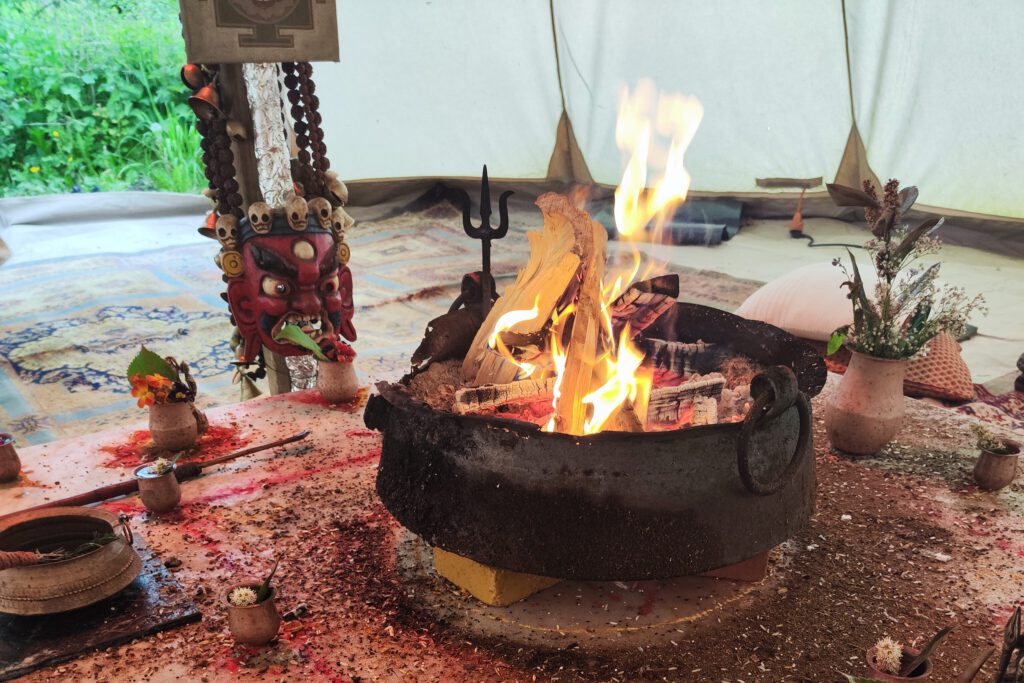
In my work, various rituals are available that can be individually combined. Each of these rituals has its own unique energy and effect:
Planetary Ritual: For karmic problems and themes related to life cycles, destiny, or cosmic influences. It connects the power of the planets with healing energy. The planets are fundamental in my tradition as they influence our karma and our subconscious.
Fire Ritual: For energetic cleansing on all levels. Fire transforms heavy energies, brings light into the system, and strengthens life force. Fire is fundamentally an element used for purification and is a tool for the shaman to assert against negative energies.
Bali Ritual: Used to remove foreign, negative energies. At the same time, offerings are given to these energies to pacify the underlying karma. This ritual exists in various variants and forms in all traditions. During healing, this is a fundamental ritual.
Naga Ritual: Works on the nervous system and with energetic disturbances from infections or unrest in the mind. Naga spirits are connected with water and healing powers. Nagas are important allies in the tradition in Nepal.
Ancestor Ritual: Through connection to the ancestors, objects can be sacrificed to them. This can be combined with a fire ritual or simply a place where we bring together the elements and gifts.
These rituals are combinable and so I can tailor them specifically to the needs of each person. Every problem manifests on multiple levels, and so we work on all levels simultaneously.
Participating in a Shamanic Healing
A shamanic healing includes certain ancient rituals that influence the soul and the energies connected with it. These rituals include mantra recitations, offering flowers, fruits, etc., fire rituals, and techniques for cleansing Kundalini energy.
They are quite traditional in detail, but truly universal in their totality. The Nepalese techniques have been modernized as little as possible, as they have proven themselves for many generations. Through the removal of negative connections via our energy body and on a soul level, with support through tailored rituals, we achieve a holistic approach.
A day in my life as a modern shaman
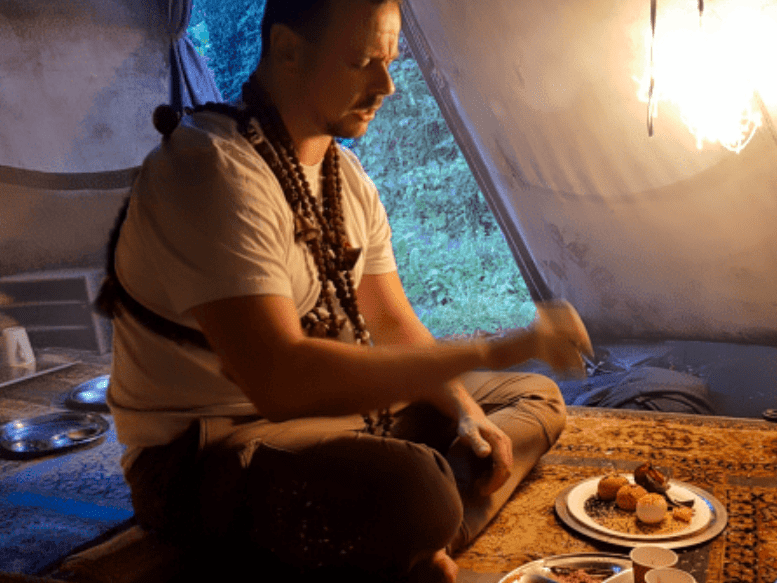
6:00 – Meditation and rituals
“In my tradition, mantra meditation is a daily practice. It connects me energetically with the tradition of my teacher and the energies that help me in my practice. There are also flowers and fears for these energies.”
18:00 – First healing session
“A client comes in with chronic back pain and a bad phase in his life. He also has the feeling that “something is not right”. We have a cup of tea and talk about what I can do. There also seems to be an energetic problem with a deceased parent. We decide to do a healing on the spot.”
18:30 – Shamanic healing
“In this case, I combine a Naga ritual for the nervous system with a planetary ritual for the client’s karma. This is followed by an energetic cleansing of the energy body. The man can’t sit for long and we’re already finished after 45 minutes.”
19:15 – Follow-up talk
“During the follow-up session, I give the client a mantra from my tradition and an ancestral ritual for his father. I also give him the tip to walk more and stretch his back.”
19:30 – Rituals and cleansing
“Afterwards I thank all the energies that were involved during the healing and give them something. Then I energetically cleanse the room and my own body. If there is still time, I like to end the day with meditation. I’m usually hungry then and eat something and watch too much YouTube.”
Feedback from the client
“A few weeks later, he wrote me an email to say that his back pain had eased a little. Emotionally, he felt very good after the healing and now sees many things more clearly. The bad energy that was sitting on him has disappeared. During the ancestral ritual, he felt the presence of his father and a deep connection.”
How Do I Recognize a Real Shaman?
The effect counts. Shamans work in the most diverse traditions and forms. What’s decisive is not how spectacular they appear, but how deep their connection to the spiritual world is.
A true shaman has access to their helper energies, and these work on the level of the soul and energy body. They may appear outwardly inconspicuous, but they carry the power within them. Conversely, someone can appear very “shamanic” and yet have no connection to the spiritual world.
Many shamans are called to their path through illness, strokes of fate, or visions. I too know from my own experience that spirits sometimes guide our paths in unexpected, even painful ways. A real shaman follows this inner guidance and places themselves in service of healing and spiritual development. Reviews on the internet and your personal feeling will lead you to the right person.
If you have further questions, feel free to write to me! Namaste
Sven Horn
